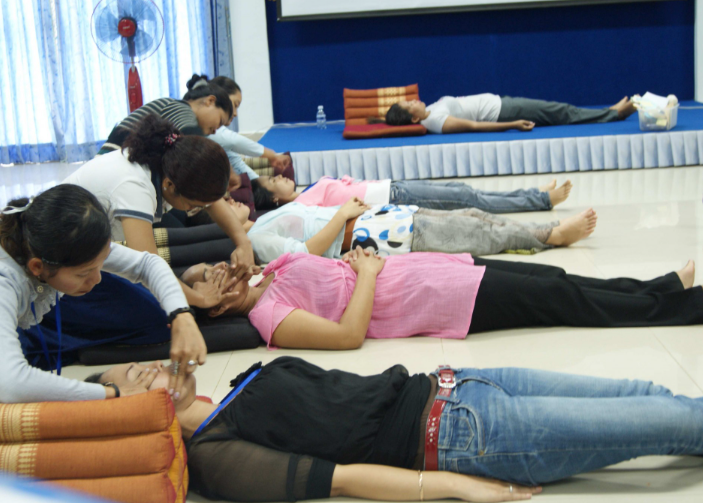Stress is something nearly everyone experiences in today’s fast-paced world. Whether it comes from work, family responsibilities, financial concerns, or constant digital distractions, stress can sometimes feel overwhelming. While a little stress may motivate us to get things done, too much of it can affect health, sleep, relationships, and overall happiness. The positive news is that stress can be managed in simple, natural, and healthy ways. By learning effective techniques, you can build resilience, stay calm under pressure, and live with more balance. This long guide explores stress from every angle, from understanding its causes to learning practical strategies for daily life.
Stress is the body’s response to challenges. When you feel pressure, the brain signals the release of hormones such as adrenaline and cortisol. These prepare you to respond quickly to threats, a reaction often called the fight-or-flight response. In emergencies this is helpful, but when stress is constant, it becomes harmful. Chronic stress can lead to fatigue, sleep troubles, digestive issues, headaches, anxiety, and even weakened immunity. Understanding how stress works is the first step to reducing it.

The sources of stress vary. Some people feel it at work when deadlines pile up or job security is uncertain. Others worry about finances, bills, or debt. Relationships can also bring stress, especially during conflicts or misunderstandings. Health issues, lack of rest, and poor diet are additional triggers. Even constant exposure to social media and digital notifications can increase tension by overwhelming the mind with too much information. Recognizing what causes stress in your life helps you choose the best ways to address it.
One of the easiest stress-relief techniques is deep breathing. When you breathe slowly and deeply, your body receives a signal to relax. A simple method is to inhale through the nose for four counts, hold the breath for four counts, and exhale gently through the mouth for six counts. Doing this for a few minutes calms both the mind and body. It’s a portable tool—you can use it at work, at home, or before bed.
Staying physically active is another powerful way to manage stress. Exercise triggers the release of endorphins, the body’s natural mood boosters. You don’t need a strict gym schedule; walking in your neighborhood, stretching, yoga, dancing, or cycling all help. Physical activity not only eases tension but also improves sleep and boosts energy levels, which reduces stress in the long term.
Nutrition plays an equally important role. When stressed, many people reach for caffeine, sugary snacks, or processed foods. While these may offer temporary comfort, they often increase anxiety and lead to crashes in energy. Choosing whole foods such as fruits, vegetables, nuts, fish, beans, and whole grains supports brain function and stabilizes mood. Hydration is also key. Drinking water throughout the day helps your body cope better with tension.
Sleep and stress are closely linked. A lack of quality sleep makes you more vulnerable to stress, while high stress makes it difficult to sleep. Breaking this cycle begins with good sleep habits. Creating a calming bedtime routine—such as dimming lights, avoiding screens, and reading—can prepare your body to rest. Aiming for seven to nine hours of quality sleep each night strengthens your resilience to daily challenges.

Mindfulness and meditation are powerful practices for calming the mind. Mindfulness means focusing on the present moment without judgment. Meditation takes it further by guiding the mind toward calm awareness. Even 10 minutes a day can reduce racing thoughts, improve focus, and promote inner peace. Apps, guided recordings, or simply sitting quietly with your breath are excellent starting points.
Connecting with nature is another underrated stress reliever. Spending time outdoors, whether walking in a park, gardening, or simply sitting under a tree, lowers cortisol levels and restores a sense of balance. Natural settings refresh your perspective and remind you that life is bigger than immediate worries.
Time management is also a practical stress-reduction tool. Much stress comes from feeling like there’s too much to do. Breaking tasks into smaller steps, prioritizing important ones, and avoiding overcommitment can ease the pressure. Learning to say no is equally powerful. Protecting your schedule helps you avoid burnout and gives you more space for rest.
Human connection matters. Talking to friends or family about your feelings can lighten emotional burdens. Sharing laughter, stories, and experiences reduces isolation and provides comfort. If you lack supportive connections, joining groups or clubs with similar interests can create new bonds.
Engaging in hobbies is another healthy way to relax. Creative outlets like painting, music, cooking, or gardening shift your focus from worries to enjoyment. These moments of joy recharge your mental energy and provide balance.
Practicing gratitude transforms perspective. When you consciously focus on the positive, stress loses some of its power. Keeping a gratitude journal—writing down three things you are thankful for each day—can shift your mind toward optimism. Even small joys like a kind gesture, a delicious meal, or a sunny day are worth noting.
Sometimes, stress becomes overwhelming despite personal efforts. In such cases, professional support is valuable. Therapists and counselors provide tools for managing emotions, while support groups offer encouragement from others facing similar struggles. Seeking help shows strength and commitment to well-being.
Preventing stress in the long term involves building resilience through daily habits. Consistent exercise, balanced nutrition, good sleep, healthy relationships, and mindfulness all combine to create a strong foundation. Limiting screen time and practicing digital detox also help, as constant exposure to news and notifications can increase anxiety.
Workplace stress deserves special mention. Many people spend most of their day at work, where deadlines, meetings, and performance pressure can build tension. Taking short breaks, stretching, organizing tasks, and practicing respectful communication with colleagues can create a more balanced environment. Employers can also play a role by encouraging wellness programs, flexible schedules, and supportive management.

Students face stress too, especially with exams, assignments, and future planning. Study schedules, balanced breaks, proper sleep, and healthy eating are essential. Mindfulness practices can help students stay focused without feeling overwhelmed. Peer support and open communication with teachers or mentors also ease academic stress.
Digital overload is another growing source of tension. Constant messages, emails, and social media notifications can overstimulate the brain. Setting boundaries such as turning off non-urgent notifications, creating tech-free times, and practicing screen breaks helps restore balance.
To bring all these ideas into daily life, consider creating a personal stress-reduction plan. This could include a morning walk, five minutes of breathing exercises at work, healthy meals, scheduled downtime, and a relaxing bedtime routine. Over time, these small consistent steps add up to big improvements in overall health and happiness.
Ultimately, stress reduction is about balance, not perfection. You don’t need to eliminate every challenge. Instead, focus on building habits that keep stress at manageable levels. Every mindful breath, every walk in the park, every note of gratitude moves you closer to peace. By practicing these tips, you can enjoy a calmer, healthier, and more fulfilling life.






